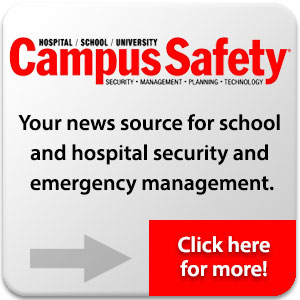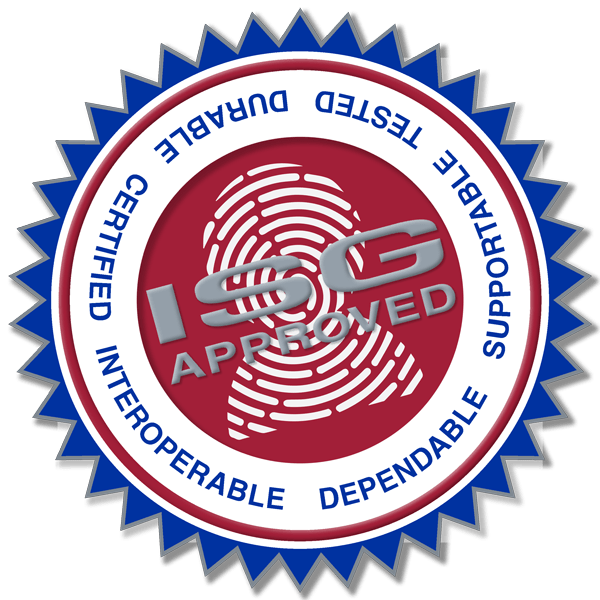Re-posted with permission from Campus Safety Magazine and edited.
Below is the second half of the U.S. Department of Justice (DOJ) Office of Community Oriented Policing Services (COPS) School Safety Working Group’s Ten Essential Actions to Improve Safety. The last 5 items of the 10 things that schools, school districts and law enforcement can do to mitigate and prevent violence on K-12 campuses. These recommended actions are intended to enable swift and effective police assistance when necessary. Again, these are just the top ten suggested solutions to improve school safety. You can learn more from your local ISG expert.
6. Behavior Threat Assessment & Management Team
Once information about a threat is received, it needs to be assessed and managed. When schools and law enforcement agencies receive information about potential threats, they should—time permitting—thoroughly evaluate and corroborate that information, and they can then develop a plan for managing the threat.
Threat assessments of individuals’ concerning behavior are best carried out by multidisciplinary teams comprising professionals including teachers; administrators; school resource officers; and school mental health professionals such as a school psychologist, social worker, or counselor or if necessary other mental health professionals. All team members should be trained on effective threat assessment considerations and processes.
If the school does not use SROs, it is recommended that a carefully selected law enforcement officer from the primary agency providing police services to the school serve on the Behavior Threat Assessment and Management (BTAM) team.
The Family Educational Rights and Privacy Act (FERPA) permits a school or district to disclose educational records, without consent, to outside law enforcement officials, mental health professionals and other experts when a health or safety emergency exists.
See https://studentprivacy.ed.gov/ for further information.
7. School-based Law Enforcement
The ability of specially selected and trained school resource officers (SROs) to establish trust relationships with students has been demonstrated to prevent school shootings. In addition, there have been numerous documented instances of SROs directly intervening to prevent or quickly mitigate active school shootings. School-based law enforcement officers should receive specialized training.
However, not every school or district can place an SRO on each campus. They might want to consider the following:
- Signing a memorandum of understanding (MOU) with local law enforcement agencies to clearly define roles, responsibilities and expectations for both the school and the agency as well as its officers
- Contracting with local and state law enforcement agencies for off-duty officers to provide school security
- Establishing a substation at the school for local and state law enforcement officers to use for breaks, report writing, and meeting with students and families around school-related issues
- Hiring retired law enforcement officers as school employees or through a contract
- Contracting with a private security company to provide armed or unarmed security officers.
Schools or districts who use armed personnel who are not sworn law enforcement officers must ensure those individuals receive training that meets industry standards and state requirements.
8. Mental Health Resources
There is a growing consensus that to support the mental and emotional health of students and prevent violence, schools must have access to counselors, psychologists and social workers who can identify emerging problems and act immediately to intervene.
Students require access to a continuum of mental health services including prevention, early intervention and treatment. This continuum should include – or have the goal of working toward – an adequate number of school-employed mental health professionals who are trained to provide services in the learning environment; are functioning members of the school team; and contribute to daily accessibility, continuity and sustainability of services.
Schools should also develop collaborative partnerships with community-based and local government social service providers to support students with more intensive mental health needs and sometimes can leverage these partnerships to augment limited funding.
9. Drills
The Federal Commission recommends the use of options-based approaches that are age-appropriate. Creating “muscle memory” and clear expectations of everyone’s role (teachers, staff, and students) during an emergency are best achieved through the conduct of armed assailant drills on a regular basis throughout the school year.
Some schools are alternating fire, weather emergency and armed assailant drills as permitted or required by state law and school district policies and procedures. It is important to note that many schools are moving away from the use of codes (Code Red, etc.) to command action in emergencies and, instead, are using “plain language” such as lockdown, secure the building, evacuate.
The IACP recommends that schools establish and practice lockdown and evacuation procedures, including where students should go during different types of emergencies. Schools are urged to consider various adverse weather conditions and ways to transport students to designated safe havens away from campus.
Additionally, it’s recommended that campuses conduct debrief sessions following all drills to identify challenges encountered and ideas for improvement. Family reunification should also be included in every school’s emergency operations plan.
10. Social Media Monitoring
While most social media posts and conversations by students are innocuous, some may portend harm to self or others. These conversations and posts may also convey concerns about school climate and safety.
Social media monitoring systems provide constant online scanning of messages within a geofence around a school or school district to identify threats and at-risk behavior including cyberbullying. Some systems are capable of monitoring beyond a designated geofence.
Social media monitoring systems when implemented with strong protocols to safeguard privacy and free speech can be an effective tool in a comprehensive, multi-layered school safety plan.
Get Solutions & Advice from Your Local Expert
The ISG offers a wide range of solutions that can improve school safety and security. In fact, whether you manage a K-12 school, a college or university, a healthcare facility, government agency or a corporate campus, we have safety and security solutions that will satisfy all of your needs.
Original article written by Robin Hattersley-Gray for Campus Safety Magazine


